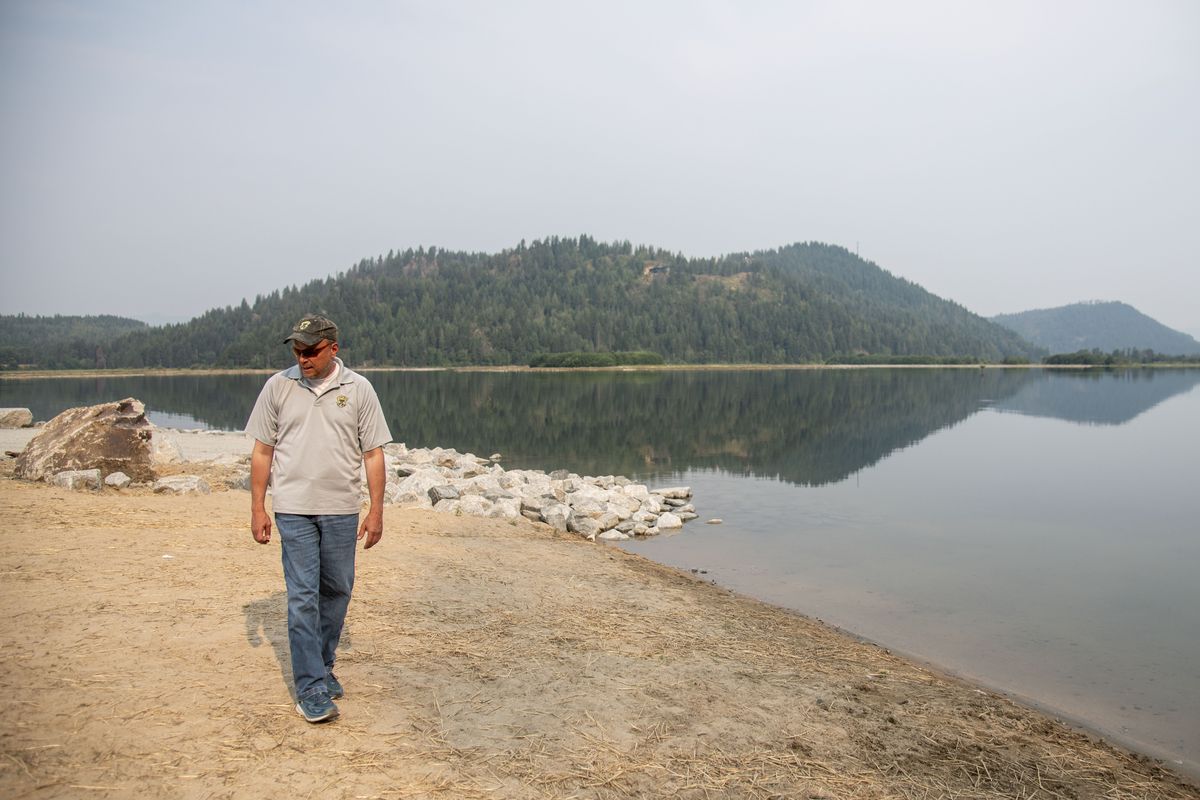Islands in the delta: Idaho shores up wildlife habitat in Pack River delta

SANDPOINT – Paddlers who like to explore the Pack River delta are having an easier time getting on the water this summer.
A new, spacious parking lot and boat ramp are open along U.S. Highway 200, offering water lovers an alternative to the primitive and skinny roadside pullouts that were once the only way to drop a kayak into the delta.
People are already taking notice.
“A couple Saturdays ago there was 10 vehicles in here,” said Pete Rust, a mitigation biologist for the Idaho Department of Fish and Game. “People are already finding out about it.”
That’s not all that’s new here in the wide spot where the Pack River meets Lake Pend Oreille.
Out in the water, there are new islands, formed with mud from the bottom of the lake this spring. The banks were armored in spots to combat erosion, and willows and dogwoods and rushes were planted. Already, little green shoots are starting to show.
It’s a $3.5 million restoration project that Idaho Fish and Game finished in June, and the fifth project over the past 15 years aimed at creating waterfowl and wildlife habitat in Lake Pend Oreille’s two largest deltas, which form where the Pack and Clark Fork rivers drain into the lake.
In all, Rust estimates about $20 million has been spent rebulding the wetland habitats in the two deltas, all in an attempt to recover what was lost after the construction of Albeni Falls Dam.
Before the dam was built, the two deltas flooded in the spring, when snow melted and roared out of the mountains. The water created channels and islands, and it fed native plants. During the summer, the water dropped, leaving some areas dry.
The dam, which was built in the 1950s, reconfigured the flow regime. Summer water levels were held artificially high, inundating the vegetation. In late fall, the water drops, leaving the delta to become a vast mud bog.
Over time, the annual fluctuations reshaped the landscape. Plants died. Islands washed away. The fertile wetlands were no more.
Talk of restoring habitat in the two deltas began in the mid-2000s. Rust said there was almost no large scale delta restoration being done in the west then, so there was a lot to learn.
In 2008 and 2009, Idaho Fish and Game launched a pilot project on the Pack River delta, building some islands and planting vegetation. Evidence of that work is still visible today – across from the new boat ramp, there are alder trees growing on an island, nearing 30 feet tall. They were planted during the pilot project.
That work answered some questions about delta restoration, such as how tall a new island needs to be to rise above summer water levels. It also showed that some good could come from moving mud around.
A few years later, with funding from the Bonneville Power Administration, Fish and Game launched the first project on the Clark Fork delta, which is much larger. There, Rust said, they built islands, armored banks with riprap and built breakwaters to blunt the impact of the wind and choppy water.
There was still more to do, however. In 2018, Idaho reached an agreement with BPA, which markets the power produced by Albeni Falls Dam. Under the deal, BPA agreed to provide 10 years of funding for delta restoration projects around Lake Pend Oreille.
Since then, Fish and Game has been knocking out a project roughly every two years. In 2020 and 2022, the agency was back on the Clark Fork delta. This year, the Pack was due for some work. Another project on the other side of a railroad trestle from the Pack delta is expected to take place in 2026.
Brian Heck, a Spokane-based engineer for Ducks Unlimited, has worked on the restoration projects in both deltas. He said each one taught them something new, and it’s helped them hone their approach.
“They’re getting better,” Heck said. “Each time, we learn a little bit more and change things up.”
Heck paddled the Pack delta with Rust a few weeks back, his first trip since construction and planting wrapped up in June. Already, he saw plants greening up and leafing out.
“It looked really good for the first year,” Heck said.
The hope is that the islands will serve as good habitat for ducks and geese. Projects on the Clark Fork have proven to become habitat for the birds, so it seems likely here, too.
“It’s not going to be some gigantic waterfowl production area,” Rust said. “But it should be beneficial.”
The new parking lot and boat ramp are already providing benefits. Bill Love, the chair of the Panhandle chapter of Trout Unlimited, said the access point off the highway is a major boon for paddlers.
The area was underused before, he said, owing at least in part to tough access provided only by roadside pullouts several feet above the delta.
Now, he’s getting used to seeing cars in the new parking lot.
“Every time you drive by there now, you see two or three vehicles parked there,” Love said.